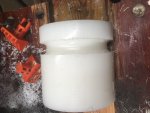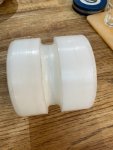chubby
Well-known member
What is there to choose between the hard black rubber or the hard white plastic ones in terms of durability and performance? I want to replace old white plastic rollers and can either find the nearest match ready made or find somewhere to machine one, also some have a groove and others a smooth curve, presumably the anchor sits in the groove?



